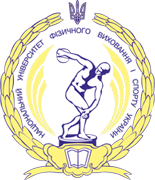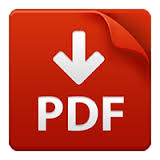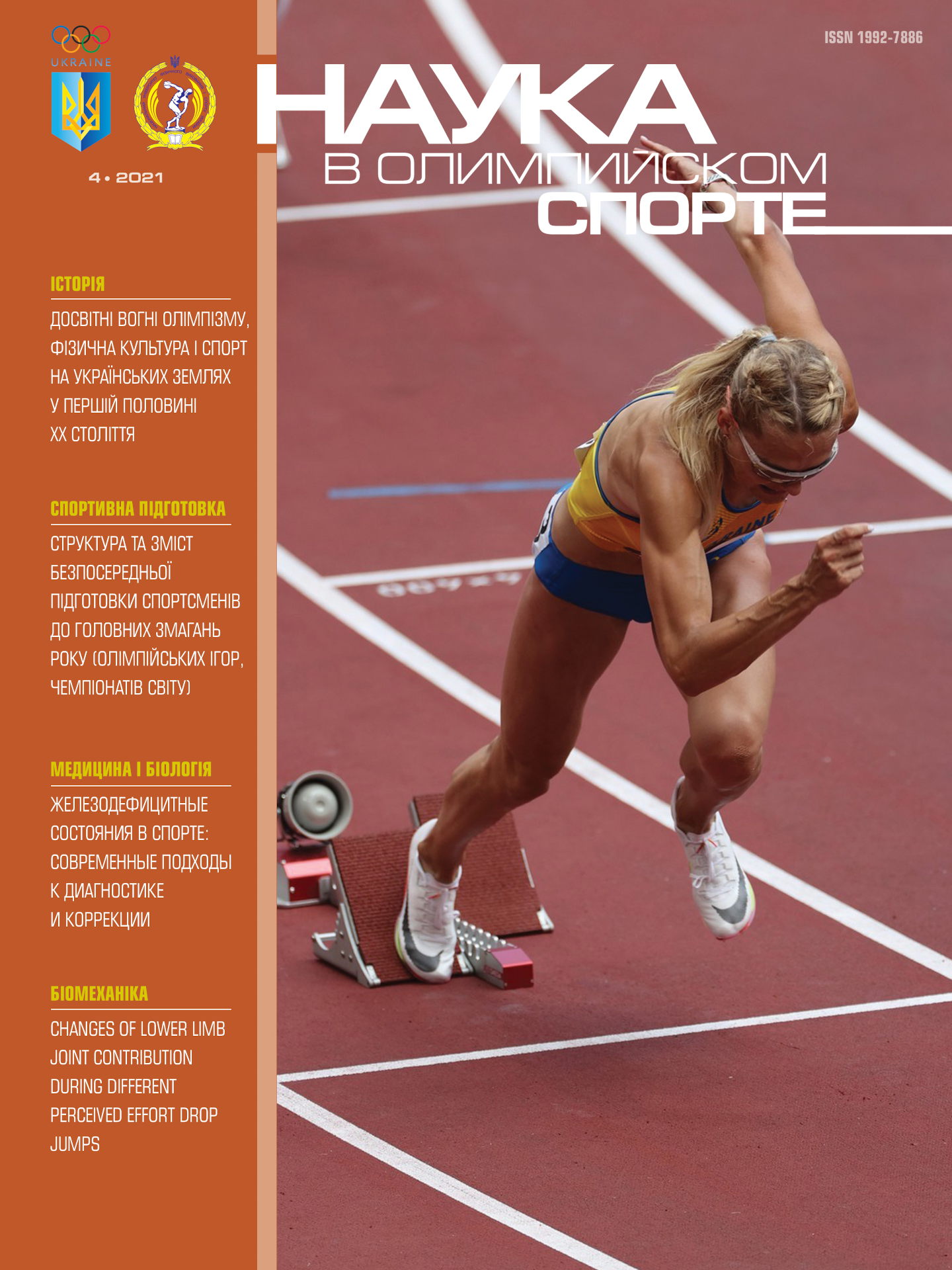doi: 10.32652/olympic2020.4_4
Objective. Development of a differentiated approach to increase the maximum oxygen uptake (VO2max) in elite athletes based on the individual use of targeted training effects. Methods. Chronometry, ergometry, pulsometry, spirometry, gas analysis, mathematical statistics. Results. The value of VO2max in athletes during exercise of maximum aerobic power directly affects the level of achievement of athletic work capacity and depends on the individual level of functional manifestations of the respiratory system in terms of minute tidal volume (VE) and oxygen concentration in exhaled air (FEO2). Between athletes with different levels of athletic work capacity there are quite significant differences in the demonstration of the quantitative level in their absolute values. Providing a differentiated impact on each of these functional manifestations of the respiratory system in the process of preparation using continuous and interval training methods, enables a real opportunity to purposefully increase VO2max in elite athletes and achieve on this basis a higher level of their functional capacities and athletic work capacity. A continuous method has a positive effect on the manifestation of the absolute value of FEO2 in exhaled air, whereas the interval method provides a stimulating influence on increasing the absolute value of VE. Conclusions. The developed differentiated approach to improving the training process of elite athletes opens the way for objective increase of VO2max with account for the peculiarities of the individual level of the respiratory system functional manifestations based on the purposeful use of continuous and interval training methods.
Literature:
1. Bulatova MM. Teoretiko-metodicheskiye aspekty realizatsii funktsional'nykh rezervov sportsmenov vysshey kvalifikatsii [Theoretico-methodical aspects of realizing functional reserves of elite athletes] [dissertatsiya]. Kiyev; 1997. 462 s.
2. Vavayev AV, Akimov YEB. Opyt funktsional'nogo testirovaniya aerobnykh sposobnostey v TSSTiSK Moskomsporta. [Experience of aerobic capacity functional testing in TSSTiSK Moskomsport] Materialy Vserossiyskoy nauchno-prakticheskoy konferentsii s mezhdunarodnym uchastiyem. Sankt-Peterburg. Severo-Zapadnyy gosudarstvennyy meditsinskiy universitet im. II. Mechnikova, 2013. 12-14.
3. Doyeva AN. Opredeleniye ponyatiya «adaptatsiya na fizicheskuyu nagruzku». [Determining “adaptation to physical load” term]. Yezhekvartal'nyy retsenziruyemyy, referiruyemyy nauchnyy zhurnal «Vestnik AGU». 2018;2(218):115-8.
4. Zhilkin AI, Kuz'min VS, Sidorchuk YEV. Legkaya atletika [Track and field] [uchebnoye posobiye]. Moskva. Akademiya; 2003. 464 s.
5. Kiz'ko AP. Sostoyaniye i perspektivy sovershenstvovaniya sistemy upravleniya podgotovkoy sportsmenov [State and prospects of improving the system of athlete preparation management]. Uchenyye zapiski universiteta imeni P.F. Lesgafta. 2016;4(134):120-126. DOI: 10.5930/issn.1994-4683.2016.04.134.p120-6.
6. Kogan OS, Galiullina SD. Faktory professional'noy sportivnoy deyatel'nosti, negativno vliyayushchiye na zdorov'ye vysokoklassnykh sportsmenov [Professional sports activity factors influencing the health of elite athletes]. Tysyacheletiye zdorov'ya i obrazovaniya. 2017;1:153-7.
7. Kolpakov A. U Renato Kanovy sekretov net [Renato Canova has no secrets]. Legkaya atletika, 2006;1-2:25-8.
8. Mak-Duggal DD. Fiziologicheskoye testirovaniye sportsmena vysokogo klassa. [Physiological testing of elite athlete]. Kiyev: Olimpiyskaya literatura; 1998. 119-89.
9. Matveyev LP. Teoriya i metodika fizicheskoy kul'tury (Obshchiye osnovy teorii i metodiki fizicheskogo vospitaniya; teoretiko-metodicheskiye aspekty sporta i professional'no-prikladnykh form fizicheskoy kul'tury) [Theory and methods of physical culture]. Moskva: Fizkul'tura i sport; 1991. s. 248.
10. Metodicheskiye osnovy i printsipy trenirovok elitnykh begunov Renato Kanovy [Methodical bases and principles of training of elite runners by Renato Canova]. [Elektronnyy resurs] 2013. Kod dostupa http://skirun.ru/2013/09/25/renato-canova-training-running/#ixzz5X2QbLs3A
11. Mishchenko VS. Funktsional'nyye vozmozhnosti sportsmenov [Athletes’ functional capacities]. Kiyev: Zdorov’ya; 1990, 200 s.
12. Mosin IV, Mosina IN, Mosina YEI. Tekhnologiya effektivnogo ispol'zovaniya sredstv i metodov spetsial'noy trenirovochnoy nagruzki v nedel'nom mikrotsikle, v bege na sredniye distantsii [Technology for efficient usage of means and methods of special training load in weekly microcycle in middle distance running]. Materialy V mezhregional'noy nauchno-prakticheskoy konferentsii s mezhdunarodnym uchastiyem «Innovatsionnyye tekhnologii v sporte i fizicheskom vospitanii» (18-19 aprelya, 2016 g.). Forum «Fizicheskaya kul'tura i sport: nauka, obrazovaniye, praktika». TSSP i Moskva, 2016; 210-216.
13. Myakinchenko YEB, Lebedev MM, Shestakov MP, Abalyan AG, Fomichenko TG. Metodika razrabotki individual'nogo trenirovochnogo plana podgotovki sportsmenov vysokoy kvalifikatsii [Methods of elaborating individual training plan of elite athletes’ preparation]. Vestnik sportivnoy nauki. 2018;4:8-11.
14. Nazarenko LD, Panova YeYe, Valkina ON. Teoreticheskoye obosnovaniye znachimosti ucheta zakonomernostey adaptatsii organizma v protsesse sportivnoy podgotovki [Theoretical substantiation of the significance of accounting the regularities of body adaptation in the process of sports preparation]. Pedagogiko-psikhologicheskiye i mediko-biologicheskiye problemy fizicheskoy kul'tury i sporta. 2018;13(1):184-193. DOI 10/14526/01_2018_299
15. Nikolayev AA. Razvitiye vynoslivosti u sportsmenov [Endurance development in athletes]. Moskva: Sport; 2017.
16. Platonov V. Teorii adaptatsii i funktsional'nykh sistem v razvitii sistemy znaniy v oblasti podgotovki sportsmenov [Theory of adaptation and functional systems in the development of the system of knowledge in the field of preparing athletes]. Nauka v olimpiyskom sporte. 2017;1:29-47.
17. Platonov VN. Dvigatel'nyye kachestva i fizicheskaya podgotovka sportsmenov [Motor capacities and physical training of athletes]. Kiyev: Olimpiyskaya literatura; 2017. 656 s.
18. Popov DV. Fiziologicheskiye osnovy otsenki aerobnykh vozmozhnostey i podbora trenirovochnykh nagruzok v lyzhnom sporte i biatlone. [Physiological bases of evaluating aerobic capacities and selecting training loads in ski sport and biath;on]. Moskva: Sovetskiy sport; 2014. 78 s.
19. Samoylov AS. Optimizatsiya sistemy mediko-biologicheskogo obespecheniya sportsmenov sbornykh komand Rossii zimnikh vidov sporta (na primere podgotovki i provedeniya XXII zimnikh Olimpiyskikh igr v g. Sochi) [avtoreferat]. [Optimization of the system of medical and biological support for athletes of the Russian national winter sports teams (on the example of the preparation and holding of the XXII Winter Olympic Games in Sochi)]. 2016. 48 s.
20. Sinichenko RP, Rybina IL, Tsibul'skiy AA, Shirkovets YEA. Analiz zavisimosti sorevnovatel'nykh rezul'tatov biatlonistov ot urovnya aerobnoy proizvoditel'nosti. [Analysis of the dependence of biathletes’ competitive results on aerobic power level]. Uchenyye zapiski universiteta imeni PF. Lesgafta. 2018;7(161):244-246.
21. Solopov IN, Gorbanova YEP, Chomov VV, Shamardin AA, Medvedev DV, Kamchatnikov AG. Fiziologicheskiye osnovy funktsional'noy podgotovki sportsmenov [Physiological bases of athletes’ functional preparation]. Monografiya. Volgograd: VGAFK, 2010. 351 s.
22. Filippov MM. Usloviya massoperenosa kisloroda v organizme pri maksimal'noy fizicheskoy nagruzke [Conditions of oxygen mass transfer in the body under maximum load]. Ul'yanovskiy mediko-biologicheskiy zhurnal. 2012;4:120-124.
23. Fril D. Bibliya triatleta. Ischerpyvayushcheye rukovodstvo [Triathlete’s bible. Comprehensive guide]. OOO Mann, Ivanov i Ferber, 2018. Kod dostupa https://www.litmir.me/br/?b=612456&p=1
24. Fudin NA, Chernyshev SV, Klassina SYA. Mediko-biologicheskiye tekhnologii pri podgotovke sportsmenov vysshey kvalifikatsii (kratkiy obzor literatury) [Medico-biological technologies during elite athletes’ preparation (review of literature)]. Vestnik novykh meditsinskikh tekhnologiy. 2016;23(2):206-213. DOI: 10.12737/20450
25. Fudin NA. Fiziologicheskiye mekhanizmy proizvol'noy regulyatsii dykhaniya pri zanyatiyakh sportom [Elektronnyy resurs]: Monografiya. [Physiological mechanisms of respiration voluntary regulation during sports engagement]. Moskva: Sport; 2020. 224 s. https://rucont.ru/efd/704138
26. Cherkashin VP. Sovremennyye tendentsii nauchno-metodicheskogo soprovozhdeniya podgotovki sportsmenov vysokoy kvalifikatsii v olimpiyskom i paralimpiyskom sporte [Modern trends of scientific and methodical support of elite athletes’ preparation in the Olympic and Paralympic sports]. Vestnik sportivnoy nauki, 2016;5:12–14.
27. Yakovlev NN. Chtoby uspeshno upravlyat', nado znat' mekhanizmy. [To manage successfully, one should know the mechanisms]. Teoriya i praktika fizicheskoy kul'tury. 1976;4:21-5.
28. ACSM’s guidelines for exercise testing and prescription. American College of Sports Medicine; 10th Edition. Philadelphia, PA: Wolters Kluwer Health, 2016; 501 p. from: https://www.academia.edu/36843773
29. Astorino TA, Edmunds RM, Clark A, King L, Gallant RA, Namm S, Fischer A, Wood KM. High-Intensity Interval Training Increases Cardiac Output and VO2max. Med Sci Sports Exerc. 2017;49(2):265-273. doi: 10.1249/MSS.0000000000001099
30. Bassett JDR, Howley ET. Limiting factors for maximum oxygen uptake and determinants of endurance performance. Med Sci Sports Exerc. 2000;32(1):70-84. doi: 10.1097/00005768-200001000-00012
31. Beltz NM, Gibson AL, Janot JM, Kravitz L, Mermier CM, and Dalleck LC. Graded Exercise Testing Protocols for the Determination of VO2max: Historical Perspectives, Progress, and Future Considerations. J Sports Med. Vol. 2016; Article ID 3968393 http://dx.doi.org/10.1155/2016/3968393
32. Billat LV. Interval Training for Performance: A Scientific and Empirical Practice Special Recommendations for Middle- and Long-Distance Running. Part I: Aerobic Interval Training: Sports Med 2001;31(1):13-31. Doi: 0112-1642/01/0001-0013/Здоров’я.$22.00/0
33. Bompa TO, and Haff GG. Periodization: Theory and Methodology of Training. Human Kinetics. 5th ed. 2009. 287-314.
34. Bosquet L, Leger L. Methods to Determine Aerobic Endurance. Sports Medicine 2002;32(11):675-700. DOI: 10.2165/00007256-200232110-00002
35. Bossi AH, Mesquida C, Passfield L, Ronnestad BR, Hopker JG. Optimizing Interval Training Through Power-Output Variation Within the Work Intervals. in International Journal of Sports Physiology and PerformanceVolume, 2020;7:982-989. DOI: https://doi.org/10.1123/ijspp.2019-0260
36. Cunha FA, Farinatti PTV, Midgley AW. Methodological and practical application issues in exercise prescription using the heart rate reserve and oxygen uptake reserve methods. J Sci Med Sport. 2011;14(1):46-57. doi: 10.1016/j.jsams.2010.07.008
37. Ferretti G. Maximal oxygen consumption in healthy humans: theories and facts. Eur J Appl Physiol. 2014;114:2007-2036. DOI: 10.1007/s00421-014-2911-0
38. Haugen T, Paulsen G, Seiler S, Sandbakk O. New Records in Human Power. In International Journal of Sports Physiology and Performance. 2018;13(6):678-686. DOI: https://doi.org/10.1123/ijspp.2017-0441
39. Holmberg H-C. The elite cross-country skier provides unique insights into human exercise physiology. Scand J Med Sci Sports: 2015;25(Suppl. 4):100-109. doi: 10.1111/sms.12601
40. Jensen K, Johansen L, Secher NH. Influence of body mass on maximal oxygen uptake: effect of sample size. Eur J Appl Physiol. 2001;84:201-205. doi: 10.1007/s004210170005
41. Kiely J. Periodization Theory: Confronting an Inconvenient Truth. Sports Medicine 2018;48:753-764.
42. Lundby C, Robach P. Performance Enhancement: What Are the Physiological Limits? Physiology (Bethesda). 2015;30(4):282-92. doi: 10.1152/physiol.00052.2014
43. Petot H, Meilland R, Le Moyec L, Mille-Hamard L, Billat VL. A new incremental test for VO2max accurate measurement by increasing VO2max plateau duration, allowing the investigation of its limiting factors. European Journal of Applied Physiology. 2012;112:2267-76.
44. Plowman SA, Smith DL. ExercisePhysiology. Exercise physiology for health, fitness, and performance. 3rd ed. Wolters Kluwer, 2011. 728 p.
45. Poole DC, Burnley M, Vanhatalo A, Rossiter HB, Jones AM. Critical Power: An Important Fatigue Threshold in Exercise Physiology. Med Sci Sports Exerc. 2016;48(11):2320-2334. DOI: 10.1249/MSS.0000000000000939
46. Rai S, Sen DJ. VO2max makes bridge between aerobic and anaerobic exercise. Pharma Times, 2018;50(3):pp. 18-22.
47. Ronnestad BR, Hansen J, Thyli V, Bakken TA, Sandbakk O. 5-week block periodization increases aerobic power in elite cross-country skiers. Scand J Med Sci Sports. 2015;26(2):140-6. doi: 10.1111/sms.12418.
48. Scheadler CM, Garver MJ, Hanson NJ. The Gas Sampling Interval Effect on V.O2peak Is Independent of Exercise Protocol. Med Sci Sports Exerc. 2017;49(9):1911-1916. doi: 10.1249/MSS.0000000000001301
49. Shruti R. and Sen. VO2max makes bridge between aerobic and anaerobic exercise. World J Pharm Sci 2016;4(8):90-97.
50. Struhar I. Laboratory determination of maximum oxygen consumption. Do we actually test the maximum values? Journal: Studia sportiva. 2018;12(1):49-58.
51. Sylta O, Toknnessen E, Hammarstrom D, Danielsen J, Skovereng K, Ravn T, Ronnestad BR, Sandbakk O, Seiler S. The Effect of Different High-Intensity Periodization Models on Endurance Adaptations. Med Sci Sports Exerc. 2016;48(11):2165-2174. DOI: 10.1249/MSS.0000000000001007
52. Thomas H, Goran P, Stephen S, Oyvind S. New Records in Human Power. International Journal of Sports Physiology and Performance. 2017, Volume 13: Issue 6. August:678-686. DOI: 10.1123/ijspp.2017-0441
53. Tonnessen E, Hisdal J. Ronnestad BR. Influence of Interval Training Frequency on Time-Trial Performance in Elite Endurance Athletes. Int. J. Environ. Res. Public Health. 2020 May 4;17(9):3190. doi:10.3390/ijerph17093190
54. Stewart P, Comfort P, Turner A. Strength and conditioning: Coach or scientist? Advanced Strength and Conditioning. An Evidence-based Approach. Routledge, 2018:21-29.
55. Turner A, Bishop D. Repeat sprint ability and the role of highintensity interval training. Routledge, 2018:99-111.
56. Vesterinen V. Predicting and monitoring individual endurance training adaptation and individualizing training prescription with endurance performance, cardiac autonomic regulation and neuromuscular performance. Jyvaskyla: University of Jyvaskyla, 2016, 102 p.
57. Winter EM, Jones AM, Davison RCR, Bromley PD and Mercer TH. Sport and exercise physiology. Routledge. 2007. 267 p.
Received: 22.12.2020
doi: 10.32652/olympic2020.4_4
Разработанный дифференцированный подход относительно усовершенствования тренировочного процесса элитных спортсменов открывает возможность для объективного повышения VО2max с учетом особенностей индивидуального уровня функциональных проявлений системы дыхания на основе целенаправленного использования способов беспрерывного и интервального методов подготовки.













